The Celtic people spread from their homeland in what is now Germany across Europe in the first millennium bce. Iron tools and weapons rendered them superior to their neighbors. They were also skilled farmers, road builders, traders and inventors of a fast two-wheeled chariot. They declined in the face of Roman, Germanic and Slavic ascendency by the second century bce.
Here Peter Berresford Ellis, one of Europe’s foremost experts of the Celts, explains how modern research has revealed the amazing similarities between ancient Celt and Vedic culture. The Celt’s priestly caste, the Druids, has become a part of modern folklore. Their identity is claimed by New Age enthusiasts likely to appear at annual solstice gatherings around the ancient megaliths of northwest Europe. While sincerely motivated by a desire to resurrect Europe’s ancient spiritual ways, Ellis says these modern Druids draw more upon fanciful reconstructions of the 18th century than actual scholarship.
[wp_ad_camp_1]
The Druids of the ancient Celtic world have a startling kinship with the Brahmins of the Hindu religion and were, indeed, a parallel development from their common Indo-European cultural root which began to branch out probably five thousand years ago. It has been only in recent decades that Celtic scholars have begun to reveal the full extent of the parallels and cognates between ancient Celtic society and Vedic culture.
The Celts were the first civilization north of the European Alps to emerge into recorded history. At the time of their greatest expansion, in the 3rd century bce, the Celts stretched from Ireland in the west, through to the central plain of Turkey in the east; north from Belgium, down to Cadiz in southern Spain and across the Alps into the Po Valley of Italy. They even impinged on areas of Poland and the Ukraine and, if the amazing recent discoveries of mummies in China’s province of Xinjiang are linked with the Tocharian texts, they even moved as far east as the area north of Tibet.
The once great Celtic civilization is today represented only by the modern Irish, Manx and Scots, and the Welsh, Cornish and Bretons. Today on the northwest fringes of Europe cling the survivors of centuries of attempted conquest and “ethnic cleansing” by Rome and its imperial descendants. But of the sixteen million people who make up those populations, only 2.5 million now speak a Celtic language as their mother tongue.
The Druids were not simply a priesthood. They were the intellectual caste of ancient Celtic society, incorporating all the professions: judges, lawyers, medical doctors, ambassadors, historians and so forth, just as does the brahmin caste. In fact, other names designate the specific role of the “priests.” Only Roman and later Christian propaganda turned them into “shamans,” “wizards” and “magicians.” The scholars of the Greek Alexandrian school clearly described them as a parallel caste to the brahmins of Vedic society.
The very name Druid is composed of two Celtic word roots which have parallels in Sanskrit. Indeed, the root vid for knowledge, which also emerges in the Sanskrit word Veda, demonstrates the similarity. The Celtic root dru which means “immersion” also appears in Sanskrit. So a Druid was one “immersed in knowledge.”
Because Ireland was one of the few areas of the Celtic world that was not conquered by Rome and therefore not influenced by Latin culture until the time of its Christianization in the 5th century ce, its ancient Irish culture has retained the most clear and startling parallels to Hindu society.
Professor Calvert Watkins of Harvard, one of the leading linguistic experts in his field, has pointed out that of all the Celtic linguistic remains, Old Irish represents an extraordinarily archaic and conservative tradition within the Indo-European family. Its nominal and verbal systems are a far truer reflection of the hypothesized parent tongue, from which all Indo-European languages developed, than are Classical Greek or Latin. The structure of Old Irish, says Professor Watkins, can be compared only with that of Vedic Sanskrit or Hittite of the Old Kingdom.
The vocabulary is amazingly similar. The following are just a few examples:
Old Irish – arya (freeman),Sanskrit – aire (noble)
Old Irish – naib (good), Sanskrit – noeib (holy)
Old Irish – badhira (deaf), Sanskrit – bodhar (deaf)
Old Irish – names (respect), Sanskrit – nemed (respect)
Old Irish – righ (king), Sanskrit – raja (king)
This applies not only in the field of linguistics but in law and social custom, in mythology, in folk custom and in traditional musical form. The ancient Irish law system, the Laws of the Fénechus, is closely parallel to the Laws of Manu. Many surviving Irish myths, and some Welsh ones, show remarkable resemblances to the themes, stories and even names in the sagas of the Indian Vedas.
Comparisons are almost endless. Among the ancient Celts, Danu was regarded as the “Mother Goddess.” The Irish Gods and Goddesses were the Tuatha De Danaan (“Children of Danu”). Danu was the “divine waters” falling from heaven and nurturing Bíle, the sacred oak from whose acorns their children sprang. Moreover, the waters of Danu went on to create the great Celtic sacred river–Danuvius, today called the Danube. Many European rivers bear the name of Danu–the Rhône (ro-Dhanu, “Great Danu”) and several rivers called Don. Rivers were sacred in the Celtic world, and places where votive offerings were deposited and burials often conducted. The Thames, which flows through London, still bears its Celtic name, from Tamesis, the dark river, which is the same name as Tamesa, a tributary of the Ganges.
Not only is the story of Danu and the Danube a parallel to that of Ganga and the Ganges but a Hindu Danu appears in the Vedic story “The Churning of the Oceans,” a story with parallels in Irish and Welsh mytholgy. Danu in Sanskrit also means “divine waters” and “moisture.”
In ancient Ireland, as in ancient Hindu society, there was a class of poets who acted as charioteers to the warriors They were also their intimates and friends. In Irish sagas these charioteers extolled the prowess of the warriors. The Sanskrit Satapatha Brahmana says that on the evening of the first day of the horse sacrifice (and horse sacrifice was known in ancient Irish kingship rituals, recorded as late as the 12th century) the poets had to chant a praise poem in honor of the king or his warriors, usually extolling their genealogy and deeds.
Such praise poems are found in the Rig Veda and are called narasamsi. The earliest surviving poems in old Irish are also praise poems, called fursundud, which trace back the genealogy of the kings of Ireland to Golamh or Mile Easpain, whose sons landed in Ireland at the end of the second millennium bce. When Amairgen, Golamh’s son, who later traditions hail as the “first Druid,” set foot in Ireland, he cried out an extraordinary incantation that could have come from the Bhagavad Gita, subsuming all things into his being [see sidebar right].
Celtic cosmology is a parallel to Vedic cosmology. Ancient Celtic astrologers used a similar system based on twenty-seven lunar mansions, called nakshatras in Vedic Sanskrit. Like the Hindu Soma, King Ailill of Connacht, Ireland, had a circular palace constructed with twenty-seven windows through which he could gaze on his twenty-seven “star wives.”
There survives the famous first century bce Celtic calendar (the Coligny Calendar) which, as soon as it was first discovered in 1897, was seen to have parallels to Vedic calendrical computations. In the most recent study of it, Dr. Garret Olmsted, an astronomer as well as Celtic scholar, points out the startling fact that while the surviving calendar was manufactured in the first century bce, astronomical calculus shows that it must have been computed in 1100 bce.
One fascinating parallel is that the ancient Irish and Hindus used the name Budh for the planet Mercury. The stem budh appears in all the Celtic languages, as it does in Sanskrit, as meaning “all victorious,” “gift of teaching,” “accomplished,” “enlightened,” “exalted” and so on. The names of the famous Celtic queen Boudicca, of ancient Britain (1st century ce), and of Jim Bowie (1796-1836), of the Texas Alamo fame, contain the same root. Buddha is the past participle of the same Sanskrit word–“one who is enlightened.”
For Celtic scholars, the world of the Druids of reality is far more revealing and exciting, and showing of the amazingly close common bond with its sister Vedic culture, than the inventions of those who have now taken on the mantle of modern “Druids,” even when done so with great sincerity.
If we are all truly wedded to living in harmony with one another, with nature, and seeking to protect endangered species of animal and plant life, let us remember that language and culture can also be in ecological danger. The Celtic languages and cultures today stand on the verge of extinction. That is no natural phenomenon but the result of centuries of politically directed ethnocide. What price a “spiritual awareness” with the ancient Celts when their culture is in the process of being destroyed or reinvented? Far better we seek to understand and preserve intact the Celt’s ancient wisdom. In this, Hindus may prove good allies.
The Song of Amairgen the Druid:
I am the wind that blows across the sea; I am the wave of the ocean;
I am the murmur of the billows; I am the bull of the seven combats;
I am the vulture on the rock; I am a ray of the sun; I am the fairest of flowers;
I am a wild boar in valor; I am a salmon in the pool; I am a lake on the plain;
I am the skill of the craftsman; I am a word of science;
I am the spearpoint that gives battle;
I am the God who creates in the head of man the fire of thought.
Who is it that enlightens the assembly upon the mountain, if not I?
Who tells the ages of the moon, if not I?
Who shows the place where the sun goes to rest, if not I?
Who is the God that fashions enchantments–
The enchantment of battle and the wind of change?
Amairgen was the first Druid to arrive in Ireland. Ellis states, “In this song Amairgen subsumes everything into his own being with a philosophic outlook that parallels the declaration of Krishna in the Hindu Bhagavad-Gita.” It also is quite similar in style and content to the more ancient Sri Rudra chant of the Yajur Veda.
Declaration of Krishna:
I am the taste in the waters, O Son of Kunti.
I am the syllable Aum in all the Vedas.
I am the sound in ether and manhood in men.
I am the pure fragrance in earth and brightness in fire.
I am the life in all existences and the austerity in ascetics.
Know Me, O Partha, to be the eternal seed of all existences.
I am the intelligence of the intelligent.
I am the splendour of the splendid.
I am the strength of the strong, devoid of desire and passion.
In beings I am the desire which is not contrary to dharma, O Lord of the Bharatas.
And whatever states of being there may be, be they harmonious, passionate, slothful–
know they are all from Me alone.
I am not in them, they are in Me.
~ Peter Berresford Ellis is one of the foremost living authorities on the Celts and author of many books on the subject, including “Celt and Roman,” “Celt and Greek,” “Dictionary of Celtic Mythology” and “Celtic Women.”
Parallels between Celtic and Vedic Cultures:
Like two rivers cascading from the same mist-shrouded mountain, Celtic and early Vedic culture share astonishing similarities. Today, knowledge of the Celt society is rather sparse, and these listed parallels are probably a small percentage of the full extent of common ground.
1) Celtic cosmology recognizes four interrelating worlds of existence: netherworld, earth realm; heavenly realm of dead and demi-gods; white realm of supreme Deities and energy source of stars.
Vedic cosmology perceives three interrelating worlds-physical; astral world of dead and demi-gods; causal universe of Deities, Supreme Being and primal energy; plus a fourth netherworld.
2) Celtic: These worlds further divided into lands and cities occupied by spirits and disincarnate people of similar character. Time is slower in these realms.
The three worlds divide into loka habitats of existence, occupied by spirits and like-minded disincarnate people. Time is dilated in the lokas.
3) Celtic earth realm is called bitus. Celtic Gods are called deuos, meaning “shining one”.
Vedic earth world is called bhu. Gods of Vedas are invoked as deva, meaning “shining one”.
4) Celtic: Departed souls dwelled in refined or hellish lands until their next reincarnation as a human or animal.
Vedic: At death, souls continue existence in subtle or hellish realms until entry into the next human or animal body.
5) Celtic priests taught that human souls were indestructible, but the universe ends and rebuilds through fire and water in a repeating cycle.
Vedic: The universe existence span-called kalpa-ends in a repeating creation/destruction cycle through fire and water, symbolic of primal light and sound.
6) Celtic deities included Gods who actualized nature forces, promulgated ethics, justice, knowledge, speech, arts, crafts, medicine, harvests, gave war courage and battled forces of darkness, and Goddesses of land, rivers and motherhood. Gods often did multiple functions.
The early Vedic pantheon included deities of fire, solar, atmospheric and nature forces, ritual stimulants, speech, crafts, arts, harvests, medicine, justice, ethical/ecological order, war, battlers of malevolent beings, river Goddesses. Gods often had overlapping functions.
7) Celtic God of thunder was Taranus who carried thunderbolts. God of fire is Aedh (pronounced uh-ee), meaning fire. The sun Deity is Sulios. The Celtic word for invocation is gutuater.
Vedic God of rain and thunder was Indra who carried thunderbolts. Vedic God of fire is Agni, meaning fire. The solar Being is Surya. The Sanskrit term for invocation is hotar.
8) Celtic cosmology conceived of cosmic creation as a primal Person sacrifice. The Celt term for breath is anal. For soul, the Celt word is anam.
Vedic cosmology describes cosmic creation as the sacrifice of Primal Being. The Vedic word for breath is prana. The soul in the Vedas is atman.
9) The central Celtic ritual was the fire sacrifice, conducted in geometric pits with offerings of herbs, mead and flour cakes, conducted by chanting druids, the Celtic priests.
The central Vedic ritual was the fire sacrifice, performed in geometric pits with offerings of ghee, spices, rice-conducted by hymn-and-mantra-chanting brahmins.
10) Celtic priests were called druids, meaning “knowers of the tree, or truth.” They memorized the entire knowledge of the Celts and passed it on orally, forbidding written transmission. They were divided into several classes: seers, judges, royal advisors, hymn chanters, poet bards, sacrificers. They were also astronomers, healers and magicians.
The Vedic priesthood – the brahmins-memorized the scriptural and societal law knowledge of the Hindus, passing it on orally, forbidding writing. Brahmins formed several divisions associated with the fire ritual duties. Enlightened brahmins became rishi seers. Others advised kings and some specialized in medicine and astronomy/astrology.
11) Druids studied for 20 years in strict discipleship to master their oral, ritual, law, science and psychic arts.
Brahmins studied for 12 years in a gurukulam to master oral, ritual, mathematical, astronomical knowledge.
12) Druids memorized extremely lengthy poetic sagas that communicated spiritual metaphysics and civic laws. The poetic metre was a fixed syllable line, free form, with 3-part cadence at end.
Bards of the Vedic literature memorized lengthy poetic sagas conveying spiritual knowledge and dharmic duty. The poetic metre was a fixed syllable line, free form, with 3-part cadence at end.
13) Druids practiced breathing, posture and meditation techniques that gave degrees of ecstacy, often accompanied by intense heat in the body.
Vedic ascetics practiced breathing, posture and meditation skills in a spiritual unfoldment process called tapas (heat), generating high body heat.
14) Celtic society was divided into three hierarchical stratas of life: priests, warriors and producers (inclusive of merchants). Druids advised warrior-kings known as rix. Upward progression through classes was possible.
Vedic society divided into four hierarchical castes: priests, warriors, merchants, workers. Brahmins counseled warrior-kings (rajas). Upward mobility was sanctioned in Vedas, but later frozen in societal law books.
15) Celts prized the magical power of telling truth, honor/piety among men and eloquence in conversation and oration.
Vedic society prized the supernatural power of truth-saying, piety and honor, and eloquence in gatherings.
16) Celts honored women, guarded their virtue, and allowed by law daughters of sonless fathers to inherit property or to marry kinsmen to bear male heirs to the father. Seeresses were sanctioned, and priestesses for Goddesses favored.
Vedic Hindus prized womanly virtues, and by law sonless fathers could bequeath property to daughters or arrange her marriage to relatives for male heirs. Female seers were countenanced, and female ascetics tended Goddess rites.
17) Celts recognized 8 forms of marriage from arranged to love to abduction. A bride gift was given by the groom.
Vedic Hindus followed 8 forms of marriage from arranged to love to abduction. The groom paid a bride price.
18) Celts defined life stages, columns of age: infancy (0-1), boyhood (2-11), adolescence (12-18), young adult (19-45), old age (46-65), decrepitude (65+) in which enlightening inspiration is sought.
Vedic society taught four ashrama stages of life: studentship (12-24); family life (25-48); elder advisor (49-72); religious solitaire (72+), in which the individual seeks enlightenment.
19) The Celtic ideal measure of life was to live 100 years.
The Vedic ideal of a fulfilled life was to live 100 autumns.
20) Celt family unit was a group of four generations from a great-grandfather.
The ancient Hindu family unit is four generations from a great-grandfather.
21) One Celt calendar was based on 62 lunar months (5 years +) intercalated to a 3-year solar cycle for solstice correction. Druids studied stellar motion, navigation and contemplated such abstracts as the size and nature of the universe.
Vedic astronomy is based on lunar months daily aligned to star positions and related to 3-year and 5-year solar cycles. Vedic astronomy was applied to astrology, and the rishi seers contemplated the universe’s nature and genesis.
22) By Celt law a man owed money could fast at the door of the debtor-who must join the fast-forcing the debtor to pay or enter an arbitration.
By Hindu law, a creditor could fast at the door of the past due debtor, who then was obligated to protect the health of the creditor and pay the debt.

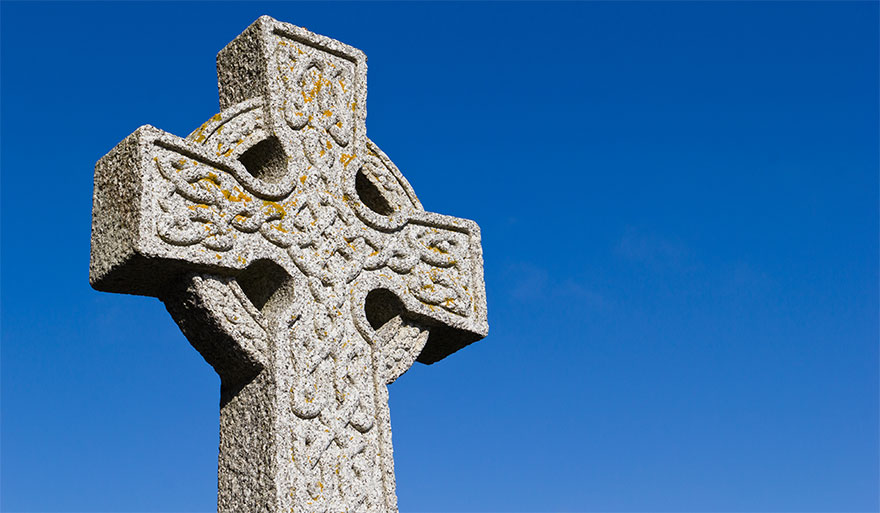
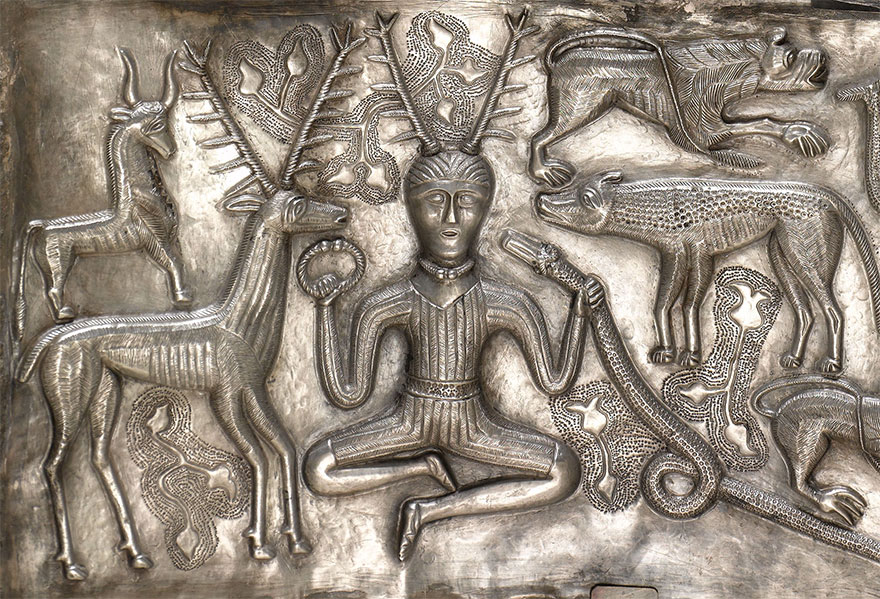
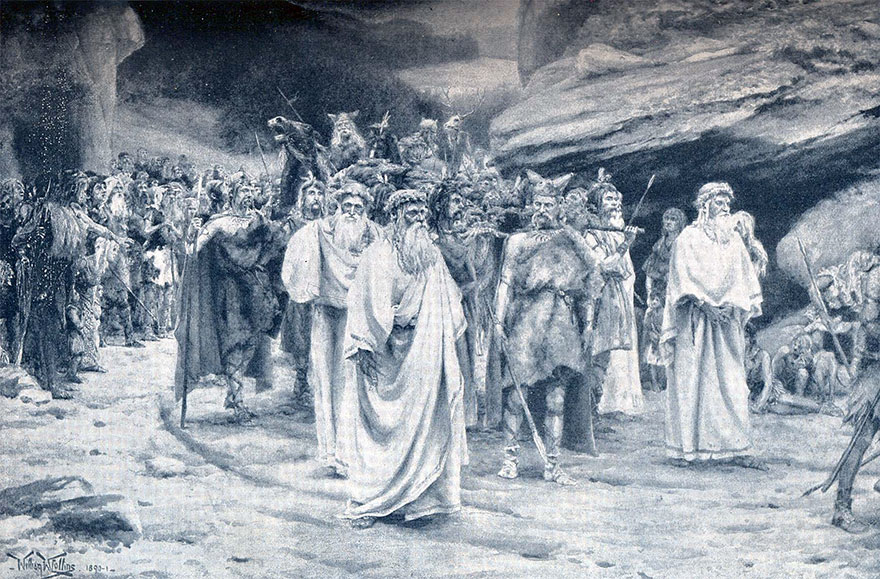
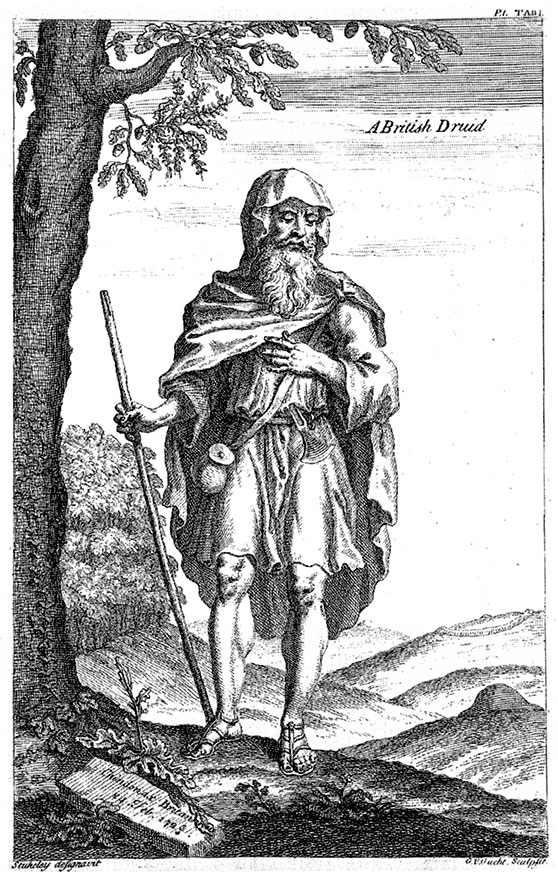
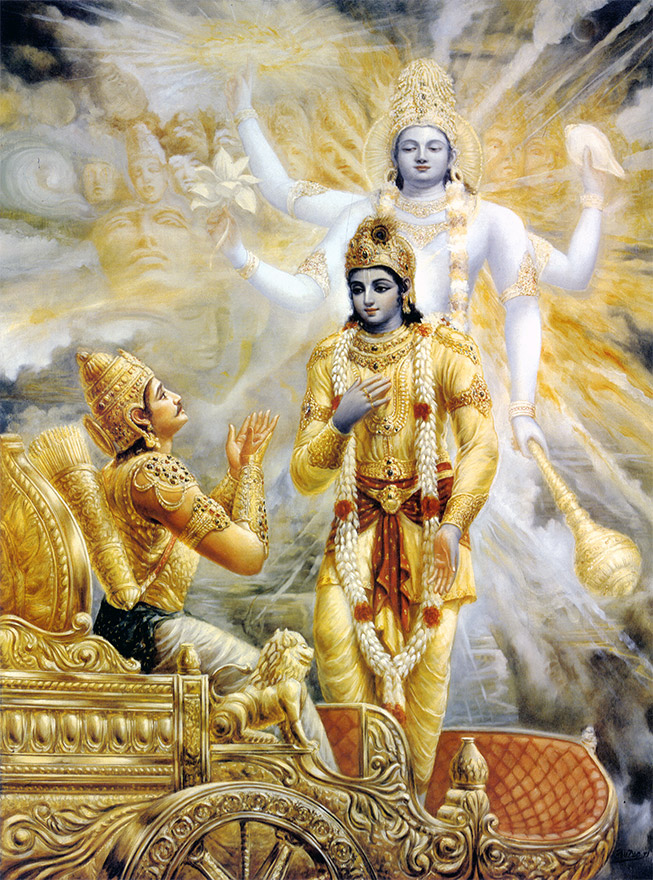

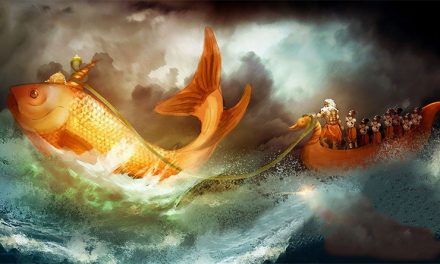
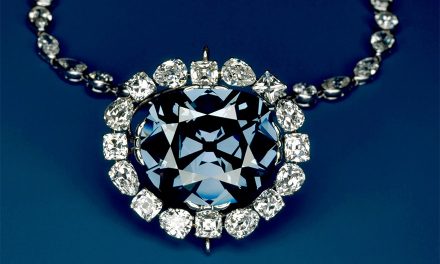
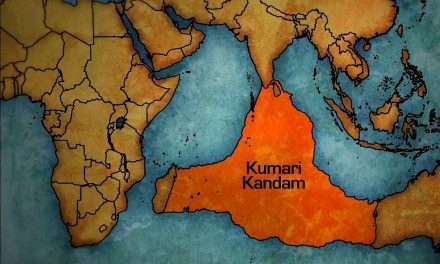









Madhusudan
The Song of Amairgeb the Druid is more like the Rudra and the Devi Sookta of Rigveda of Risi Vagambhrini . The quotation from Bhagavad Gita cited by the author is less appropriate here. The Vedas are also much older and compatible in Time with the peroiod of the Druids. Bhagavad Gita is much later in Time with reference to the Druids.
Excellent article! Another similarity is the usage of the word Hu for the Creator god or sky god in Ireland. The Egyptian sphinx had the same name. The English term God is etymologically descended from the early German ghu which is compared to the Sanskrit hu, and as this article states, the Celts came from the area now knoen as Germany. Etymologists have always disagreed as to whether the English word is from the Indian or Germanic peoples in its origin. Perhaps it is as simple as to say that the Indian peoples settled the world in early pre-history and thus had such an impact on many cultures that now appear to be unrelated according to accepted mainstream history.
What books and/or articles in English are available to further examine this similarity? Scholarly and popular, please. Thank you.
Mystical type of Irish descent, poet by nature more than training, who naturally ends up creating pieces in the described pattern. My soul NEEDS to know the facts related to this, please.
The celtic and vedic comparison is well written. The narrations are very impressive.
Dear Sir,
It is really interesting and informative. I would like to subscribe and upload my articles in your news letter.
Thanking you,
with regards.
Dr K T Vinodkrishnan
amiya ayurveda nursing home,
pattambi, palakkad, kerala, india
Well thought out and researched, except that the Celts did not originate in what we now call Germany. Thanks to the assorted human genome projects, it’s looking like the Celts originated much further East and North, well before the Tocharian cultures.
When Lord Parasuram was on earth, his father the sage Jamadagni was killed by the King Kartavirya Arjuna. Parasuram born a brahmin decided to take up the occupation of a ksatriya and took weapons his axe and bow and arrow and chased Ksatriyas all over the world and killed them. Those who survived ran away to Europe and other parts of the world and so because those Ksatriya Kings who escaped with their entourage were part of the Vedic culture, wherever they went Europe, Brazil, America – set up Vedic culture according to their understanding and capacity. So the original Vedic Culture will be seen in diluted versions in different parts of the world but it comes from the original Vedic culture of India and spread throughout the world by the ksatriyas kings and their followers escaping the attacks of Lord Parasuram.
So the theory of British historians that Aryans came from outside or the new theory that they went to other countries or places from India –one of the two theories or both must be true.
Thank you…Good stuff! The Basques in Spain are also Celts. A Couple of worthy correlations:
* The Hill of “Tara” in Ireland, which is topped by a mandala & an imposing lingham. Reputedly originally an observatory…Tara = Star, but I also love the Goddess, & Celts were Woman Lovers, as opposed to later societies of Woman users, & abusers.
* Murrugan; The Indic General of the heavenly army & “The Morrigan”, The Celtic Battle Goddess & probably his Shakti (Katyayani?), an aspect of mother Durga, & also from memory, a Triple Goddess (The Morrigan). I love it when these things line up.
This knowledge goes beyond my limits and need to be connected
Why did Indian culture survive till now in spite of the onslaught of dogmatic religions, whereas the Celtic disappeared?
The answer may lie in the fact that India has a HUGE body of texts with most profound philosophy, knowledge on science, art, music… and a lot of it is still there. People are still well rooted in their ancient culture.
Frankly i don’t understand why linguists are so eager to claim that there was a common earlier language/culture which had originated in Central Asia when there is no aracheological proof, neither is there a body of texts.
Is the reason maybe that India, a colonised nation, must not look better than the colonisers?
All I see is everything is taken/stolen from India and made their own history ,religions,books, education and languages,rituals agriculture in their own narrow ways.just like ‘sanskrit’ is the mother of all languages,all the good there is in this world came from our land,our ancestors,they don’t get any credit,what ever is being discovered now are stolen from our ancestral knowledge and giving their own names
Beautiful And fascinating article. Thank you.
WELL , I Happen upon this site Very nice , The blue kids of earth as a 3/d being have been on earth at least 35,562 year
Interesting Article, for this to be a more scholarly piece of work where is the bibliography and resources used to substantiate these claims.? I have no doubt that much of what you say is true about similarities of language but I would like to read further.
Thanks for the good unifying theme and well-researched article on indiadivine titled ‘The Celtic-Vedic Connection’ It reveals astonishing similarities between Vedic culture and the European Celtic culture. Sanskrit language seem to have been embedded in the European languages and English language so closely today that we may not realise fully well enough.
Here is a set of common English words that seem strikingly similar to Sanskrit – perhaps a tribute to their Sanskrit heritage. Many are human physiology/medical or science-related. Scholars can perhaps research more and develop a more comprehensive dictionary of words sharing this shared language heritage – i feel.
1. Dental – “Danthi” / “Daantha” (teeth- related)
2. Nasal/Nose – “Naasi” (nose related)
3. Pede/Pedal/Podal – “Paadham” (Foot-related)
4. Heart – “Hridha”/ “Hrudhay” (heart-related)
5. Hand – “Hastha” (hand related)
6. Mind – “Manam/Mano”
7. Duo/dual – “dwi” (2)
8. Tri/three – “thriya” (3)
9. Quattr – “chatur” (four)
10. Penta – “pancha” (five)
11. Hexa – “shasta” (six)
12. Septa – “saptha” (7)
13. Octo – “ashta” (8)
14. Nona – “nava” (9)
15. Deca – “dasa” (10)
16. Cephalo – “Kapaala” (head/skull-related)
17. Name /Nomen – “Naama” / “Naamam”
18. Entrail – “Aanthram”
19. Ma/Mother/Mater – “Mata/ Maatru”
20. Father/Pater/Patri – “Pithaa/Pithru”
21. Brother/Frater – “Braatha”
22. Cow – “Gho”/Ghow”
23. Royal/Regal – “Raaja/”Raajya”
24. Man/Human – “Manushya”
25. Day/ Diurnal – “Dina” (day-related)
26. Mort /mortal/ mortuary – “Mrutyu” /Maranam” (death)
——-
Thank you.
K. Bharath Kumar
http://www.indiadivine.org/byline/k-bharath-kumar/